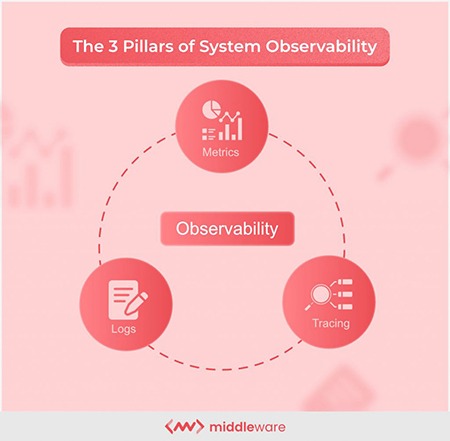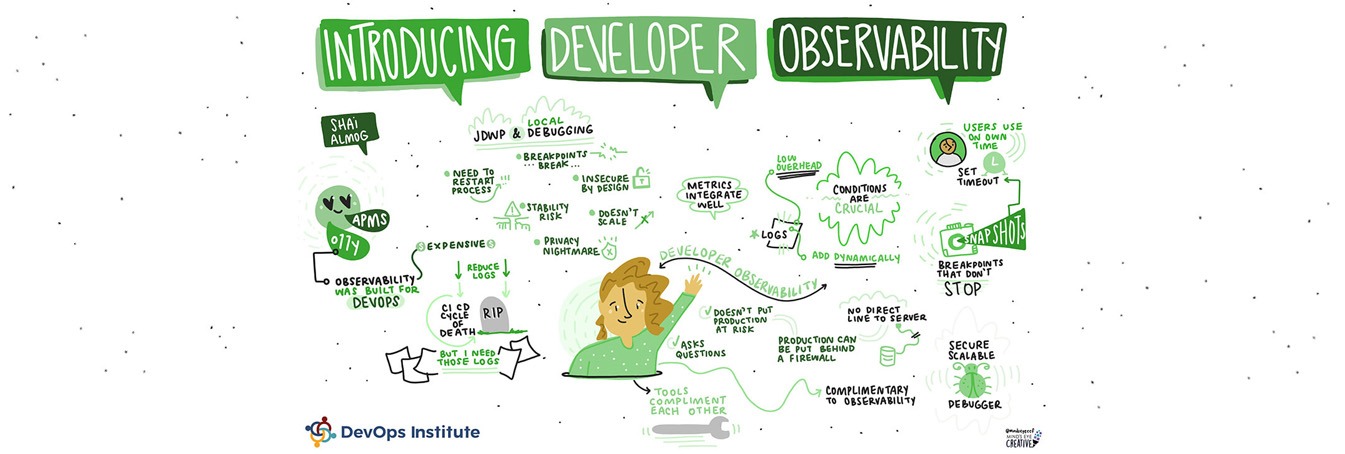With the quick-paced advances in tech today, managing IT well is crucial. One key factor in top-notch IT plans is observability. But what does observability mean exactly in today’s IT terms? How can it help people like tech bosses, DevOps techs, and other decision-makers handle the tricky digital world?
To put it simply, observability lets you see your cloud-native apps and structures from start to finish, in detail. It’s about using machine learning, automation and the latest tools to kick-start greater speed and smoother operation.
Observability is more than just a fancy term; it’s a must-have part of designing, setting up, and running today’s IT systems, including mainframes. It allows you to gain insights into the performance and health of your mainframe systems, ensuring they operate smoothly and efficiently.
Understanding Observability
Observability has emerged as a crucial aspect of current technology-dependent environments, impacting system performance management and enhancement. It refers to the capacity to discern a system’s internal state based on external output that eliminates the need for direct system modifications.
Observability facilitates a holistic understanding of your system’s operations, right from the source of data requests to the implementation of database queries.
- Observability aids in dealing with small system problems before they get big. This helps in effective management.
- You can capture and study lots of measurement data like metrics, logs, and traces with observability. This happens within an all-purpose platform.
- Observability isn’t just tech talk. It’s a great tool for anyone who needs dependable tech businesses. This includes bosses, people making key decisions, software experts, and investors.
Core Components of Observability
In the multifaceted world of IT, three core components of observability are vital for the simultaneous optimization of performance and troubleshooting of potential issues.
These mechanisms, when utilized effectively, can drastically improve the efficiency and reliability of your systems, simultaneously streamlining operations and maximizing revenue.
- Monitoring: An essential feature lets groups monitor an app’s performance data live. It offers details on handling traffic, mistake numbers, and reply speed. This handy tool can help spot and fix efficiency issues before they get bigger.
- Logging: This is essentially a system diary, documenting discrete events occurring within the system. From simple informational messages to critical system errors, logs can provide DevOps engineers with a clear path to follow when troubleshooting system issues.
- Tracing: Essential to understanding the interactions of various components within a complex system. When a request journeys across multiple systems and services, tracing can illuminate how these components interact, enabling teams to rectify bottlenecks and improve overall system interactions.
Realizing the value of these tools and incorporating them into the workings of your infrastructure will not only put you ahead of the pack but also ensure your systems are robust, reliable, and ready to handle the ever-changing landscape of modern IT.

Importance of Each Component in Gaining Insights
The importance of each component in observability cannot be overstated, as they play a pivotal role in dissecting the architecture of cloud-native applications. Each offers a unique advantage:
- Metrics: These provide real-time information essential in instant anomaly detection, thereby circumventing potential issues.
- Logs: Serving as verbose event accounts, logs enhance system transparency, offering an in-depth insight into the minutiae of application processes.
- Traces: Acting as a behavioral map, traces enable the tracking of transactional processes from initiation to completion, thus revealing a comprehensive view of the application’s activity.
In combination, these components contribute to a comprehensive monitoring system, imparting complete visibility of your application’s functioning. By highlighting system component issues promptly, they facilitate rapid, effective problem resolution.
Key Benefits of Observability
Observability, a crucial IT practice, embeds numerous benefits for modern enterprises and DevOps environments. By allowing teams to acquire comprehensive insights into system performance, observability contributes significantly to troubleshooting efficiency.
- Enhanced System Stability: Observability aids in identifying unstable areas of your system, enabling your engineers to optimize those areas to maintain uninterrupted performance. As a result, it contributes to an exponential increase in system availability.
- Faster Troubleshooting: By providing an in-depth view of systems, observability allows teams to pinpoint problems quickly, reducing downtime and enabling faster resolution. This enhances user experience by ensuring constant availability.
- Scalability: Observability lays the foundation for scale by allowing teams to understand how systems react to changes or increased loads, thus promoting sustainable business expansion.
Implementing Observability in IT Systems
Implementing observability in your IT systems demands an integrated approach, one that takes into account three core pillars: logs, metrics, and traces, often referred to as the “three pillars of observability”. This framework provides a comprehensive view of your systems, making it easier to locate and debug potential issues.
Your strategy should start with the deployment of logging software. This tool will record all the events that occur within your system, serving as a historical record. Metrics, the second pillar, are numerical values that show how your system is performing at any given time. They give you quick insights into the health and performance of your applications.
- The use of distributed tracing tools will complete your visibility by giving you insights into the interactions that occur within and across microservices. This is pivotal in helping you understand how requests flow through your cloud-based applications.
- In addition, adopt the use of AIOps platforms, where Artificial Intelligence (AI) is applied to data correlation, anomaly detection and predictive capacity planning.
- Next, ensure that your observability system promotes a collaborative culture. Observability isn’t just a tool but also a cultural shift that requires the full participation of the entire team for success.
A critical aspect of the observability implementation is continuous training. Ensure that your team always keeps learning about new tools, frameworks, and best practices to improve observability constantly.
Challenges and Solutions
Despite its undeniable benefits, implementing observability can present a set of challenges, but effective strategies can overcome these. Let’s look into some common obstacles associated with implementing observability and the potential solutions that can address them.
Challenge: Complexity in Observing Distributed Systems
Underlying modern IT architectures generally require distributed systems, including mainframes, that may be difficult to view. The additional challenge comes in the form of the huge amount of data generated that is sometimes difficult to analyze and get insights from.
Solution: Use Advanced Observability Tools
To efficiently observe distributed systems, enterprises can employ advanced observability platforms that offer comprehensive visualization and analysis, capable of managing vast volumes of data in real time, including data from mainframes.
Challenge: Lack of Skilled Personnel
Building an observant IT infrastructure requires expertise. Enterprises may struggle to find personnel with the technical skills to implement and manage observability practices effectively.
Solution: Training and Strategic Hiring
Enterprises can fill the skills gap through continuous training and development programs for their employees. Moreover, strategic hiring of professionals with a background in observability can be beneficial.
These hurdles might look scary, but with good planning and the right tools, any organization can watch their IT systems effectively. This leads to better operations and staying competitive in the fast-paced IT world.
The Role of Observability in DevOps and Agile Environments
The observability concept stands out as a touchstone of well-performing systems in the ever-changing world of contemporary IT. To have an end-to-end visibility of cloud-native applications is the best way to ensure seamless uptime, effective problem solving and better revenue generation.
On the other hand, putting it in practice well and coping with all that follows pose one complicated task. We need to understand the importance of observability from the perspective of technology leaders, enterprise decision-makers, DevOps engineers, software engineers, and investors in this thorough guide.
The Role of Observability in IT Resilience
Interestingly enough, modern applications are characterized by IT resilience, which is one of the elements that stakeholders look for in them. Here, let us begin to untangle the role that observability plays in producing more resilient IT systems and why it is such a necessary element in modern-day IT infrastructure. Consider these three reasons:
- Enables proactive issue resolution: Rather than solving problems reactively with old-school methods, observability helps to identify and mitigate issues before they intensify and damage the system.
- Facilitates system understanding: To build resilience, it’s essential to have comprehensive knowledge of the system. Observability allows you to see the whole system as a unity, which makes it easier to understand and control.
- Amplifies the process of system improvement: Having observability in place opens up opportunities for continuous refinement of systems. It allows you to trace back, investigate, and ultimately improve your IT systems.
Emerging Trends in Observability
As we proceed to the changing landscape of IT, there are emergent trends that evolve towards the future of observability. The knowledge of these trends becomes crucial not only for technologists or IT professionals but also for enterprise decision-makers because they form the basis for business strategies and resource allocation.
Artificial Intelligence and Machine Learning
Today, Artificial intelligence (AI) and machine learning, together with IoT, contribute a lot towards the revolution of observability. Human analysis of modern IT systems is impossible due to the huge volume of data they produce.
Contextual and Real-Time Data Representation
Modern-day monitoring tools are moving towards providing real-time, contextual visualizations of data. Rather than presenting raw, unprocessed data streams, these tools are capable of illustrating the data in a more contextual and user-friendly manner.
Interconnected Observability
The need for a consolidated monitoring and observability solution increases with the proliferation of services, platforms, and tools used in application development and operations. Holistic observability is the result of an integrated approach to observability that pools data sets from scattered sources and creates a congruent whole, providing a clearer perspective on how the system functions.
Best Practices for Maintaining Observability
Observability is not a once-and-done thing; it’s an effort that requires continuity. For businesses seeking to maximize the value and effectiveness of their observability strategies, here are some best practices:
Continuous Monitoring
Continuous monitoring is a must for ensuring visibility. Real-time detection of any anomalies that might affect the performance of the system is provided. Use strong software that enables the monitoring of various indicators over time to detect any shifts or patterns.
Integrating Observability and DevOps Culture
Observability and DevOps should be mutually beneficial. The smooth inclusion of observability in the DevOps lifecycle promotes a climate where accountabilities are shared. It promotes preemptive problem-solving approaches.
Use of Open-Source Tools
It is beneficial to use open-source tools because they can be tailored to meet the needs of your organization. Such tools typically enjoy large community participation. This provides opportunities for collaboration and learning from others’ trials.
Conclusion
The role of observability in the modern IT environment cannot be overstated as a foundation for successful cloud-native applications. It enables companies to easily resolve issues, improve efficiency, and deliver an outstanding user experience. It is essential to master the nuances of observability by using sophisticated tools, constant training, and establishing a DevOps culture.
Organizations can greatly increase their IT resilience by carefully observing rising trends and optimal practices. With its scope of benefits and possibilities for innovation, observability provides a route to operational efficiency.
Srushti Shah is an ambitious, passionate, and out-of-the-box thinking woman having vast exposure in Digital Marketing. Her key focus is to serve her clients with the latest innovation in her field leading to fast and effective results. Working beyond expectations and delivering the best possible results in her professional motto. Other than work, she loves traveling, exploring new things, and spending quality time with family. Reach out to Srushti Shah onTwitterorLinkedIn


